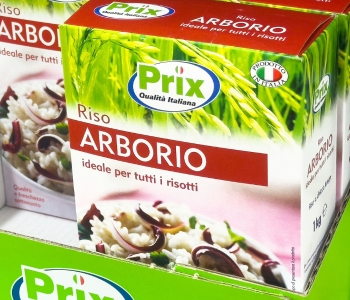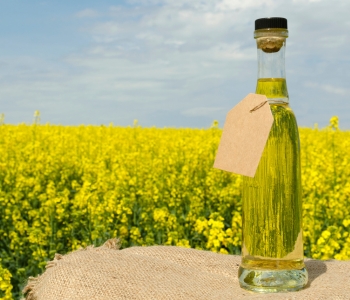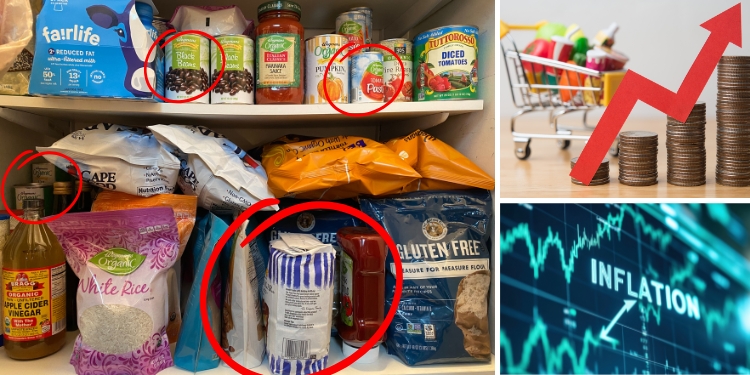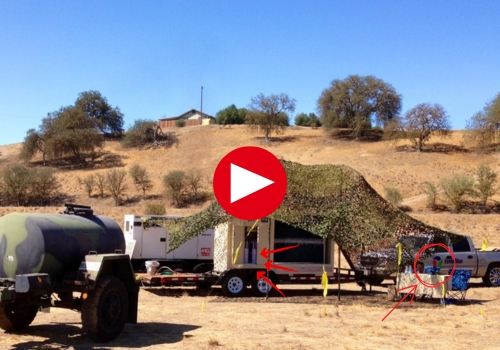If recent years have taught us anything, it’s that the supply chain stability we rely on every day can be disrupted overnight. Whether it’s inflation, shipping logistics problems, ships hitting bridges, trade wars, supply chain breakdowns, or global or natural disasters, you know it’s not a matter of if, but when something’s going to run out.
When shelves run bare and prices skyrocket, it’ll be the people who stocked up ahead of time that will be miles ahead of the rest. So, stocking up on essential pantry staples while prices are affordable gives you more capital and barter value you might need when scarcity comes knocking at the door. That starts with adding these pantry staples while they’re cheap.
Jasmine & White Rice
Rice is one of the world’s best belly-filling staples that needs to be stocked in your pantry. Yet only a tiny percentage of the world’s rice production happens in the continental US.
Properly stored in Mylar bags with oxygen absorbers white rice can last up to 30 years. It’s calorie-dense, easy to cook, and versatile.
Best Rice to Stock in the Pantry
 Ideally, you want to stock up on white rice varieties like long-grain, arborio, and jasmine rice. It’s best to avoid brown rice because its natural oils go rancid faster.
Ideally, you want to stock up on white rice varieties like long-grain, arborio, and jasmine rice. It’s best to avoid brown rice because its natural oils go rancid faster.
Stock up in bulk 25 lb. bags to stretch your dollar. Even if prices spike, you’ll have thousands of calories on hand.
Dry Beans & Lentils
Beans and lentils are protein-packed, nutrient-rich, and inexpensive. Pinto beans, black beans, chickpeas, navy beans, and lentils are all smart buys. It’s also worth noting that Dried beans last longer than canned beans.
Best Beans & Lentils to Stock in Your Pantry
It’s best to stock multiple types of beans, lentils, peas, and protein-rich chickpeas in your pantry. Not only does it diversify your stores, but it will give you some culinary variety to keep future meals interesting.
- Pinto Beans are high in protein and fiber. They’re versatile for soups, stews, and refried beans with a long shelf life when stored dry.
- Black Beans are loaded with antioxidants and protein, they’re dense, filling, and ideal for hearty chili or rice dishes.
- Chickpeas or Garbanzo Beans are protein-rich and adaptable for hummus, stews, and salads, they also sprout easily for fresh greens in a crisis.
- Red Lentils are quick-cooking and nutrient-dense. They’re also great for making belly-filling creamy soups and require less fuel and water to cook thoroughly than other legumes.
- Green Lentils do a good job of holding their shape in soups and salads, while also being a good source of iron and protein.
- Navy Beans might be mall and mild-flavored, but they’re excellent for making baked beans and creamy soups, while also being calorically dense.
- Split Peas are naturally shelf-stable and fast-cooking, they’re perfect for thick, satisfying soups with minimal ingredients.
How to Store Beans & Lentils for Long-Term Storage
Store all dried beans, lentils, and chickpeas in airtight containers, like Mylar bags with oxygen absorbers. In a pinch, you can store them in clean food-grade buckets.
Put the storage vessel in a cool, dark, and dry place. Rotate your stock every few years and keep it away from moisture, heat, and pests to ensure long-term viability and nutrition.
Canned Meat & Fish
Canned meats like tuna, salmon, chicken, and Spam, are important pantry staples you can rely on in a long-term crisis. When natural protein supplies run out canned meat and fish will still have a shelf-life range of 3 to 5 years, sometimes longer.
- Canned Tuna is packed with protein and omega-3s, canned tuna is lightweight, affordable, and has a shelf life of 3 to 5 years. Unopened pouches of tuna are also good when they’re on sale, but typically only keep for 2 to 3 years.
- Canned Salmon is rich in healthy fats and vitamins, canned salmon offers long-lasting, nutrient-dense protein with a shelf life of around 5 years.
- Canned Chicken is versatile and mild-flavored, canned chicken stores for up to 5 years. It can be easily used to bulk up soups, casseroles, and emergency salads.
- Spam has a shelf life of 5–10 years and is a ready-to-eat protein that is extremely versatile. It works well in frying, sandwiches, and hearty meals under duress.
Cooking Oils & Essential Fats
Fats are often overlooked but crucial for survival diets. Different oils and essential fats have different benefits and storage conditions. Not only do fats and oil provide dense calories. Your body also needs them to absorb certain nutrients.
 Olive Oil is packed with healthy monounsaturated fats, olive oil is versatile for cooking and dressing but has a shelf life of about 1–2 years if stored in a cool, dark place.
Olive Oil is packed with healthy monounsaturated fats, olive oil is versatile for cooking and dressing but has a shelf life of about 1–2 years if stored in a cool, dark place.- Coconut Oil has a shelf life of up to 5 years if unrefined. Coconut oil is solid at room temperature, and stable for high-heat cooking. It can even be useful for skin and medical applications.
- Avocado Oil has a high smoke point and is rich in nutrients, avocado oil lasts around 1–2 years unopened and is excellent for both cooking and salad dressings.
- Vegetable Oil is inexpensive and multipurpose, vegetable oil has a shelf life of about 1 year but is easy to rotate regularly for frying and baking needs.
- Canola Oil has a mild flavor and high smoke point make canola oil great for all-purpose cooking, with a shelf life of about 1–2 years unopened.
Lard is a traditional animal fat that’s excellent for frying and baking, and when properly rendered and stored in airtight containers, can last up to a year or more.
Storage Tip
Store oils in cool, dark places, and consider powdered butter or lard alternatives. You want to keep the oil from freezing temperatures and exposure to light. Especially olive oil, which is prone to oxidizing.
Powdered & Shelf-Stable Dairy
Fresh dairy will be gone fast in a crisis. Stock powdered milk, evaporated milk, condensed milk, and even powdered cheese like the powder packets in macaroni & cheese.
 Powdered dairy products also tend to be high in calcium, protein, and fats. Just look for brands with a long expiration date. Then rotate them every 6 to 12 months to keep them fresh.
Powdered dairy products also tend to be high in calcium, protein, and fats. Just look for brands with a long expiration date. Then rotate them every 6 to 12 months to keep them fresh.
The value of powdered milk became evident as early as the creation of the famous Doomsday Ration during the Cold War. This life-saving package for the population even included survival biscuits, made from flour, vegetable fats, salt, and powdered milk.
The complete ration also included several other essential components and offered the following key benefits:
- Extreme shelf life: could last 5–10 years or even longer.
- Sealed metal tins or thick cardboard packaging.
- Concentrated calories: designed to sustain life, not comfort — around 700–1200 calories per person per day.
You can still get your hands on a modern version of the Doomsday Ration today. It’s extremely affordable and incredibly useful for survival.
👉 Discover how to make the US Doomsday Ration at home and many more survival recipes right here.
Dehydrated & Freeze-Dried Meals
The value of dehydrated meals and MREs is high, and the prices for them can fluctuate. If your budget allows, invest in freeze-dried survival meals and dehydrated fruits/vegetables. Not only can you feed yourself with them, but they have a more easily recognized barter value than other pantry items like rice and beans.
Though pricier, these lightweight, ready-to-eat meals save fuel and time in a true emergency. If nothing else, you should have a handful of MREs in every bug-out bag and emergency backpack.
Coffee & Tea
 Caffeine from coffee and tea isn’t essential in a prepper’s pantry, but it sure helps morale and energy. It also has enormous barter potential in a disaster situation that lasts for multiple weeks.
Caffeine from coffee and tea isn’t essential in a prepper’s pantry, but it sure helps morale and energy. It also has enormous barter potential in a disaster situation that lasts for multiple weeks.
Coffee, tea, and even instant coffee packets are stored easily. Vacuum-sealed bricks of coffee can last up to 2 years or more in the freezer. It’s the sort of thing you might be able to live without, but I’d bet your neighbors can’t.
Interestingly, among the Amish, coffee plays a unique role. When it comes to its core purpose, they actually prefer a solution they call “The Strength Juice” to energize themselves. The Amish consider it more effective than coffee and the taurine found in drinks like Red Bull.
They still love and use coffee, though! One old recipe that’s stood the test of time is Amish Coffee Soup. It’s made by pouring hot coffee over chunks of homemade bread, then adding milk and a bit of sugar.
It’s warm, energizing, and surprisingly filling. For those looking to stretch limited resources, this simple dish becomes a practical survival food. You can discover more Amish secrets in The Amish Ways Academy and The Amish Ways Book, created by Eddie Swartzentruber, born and raised in the community.
Pasta & Instant Grains
Pasta is cheap, filling, and easy to store long-term. Consider stocking up on spaghetti, elbow macaroni, egg noodles, and instant oats or grits. They cook quickly, stretch meals, and pair well with canned goods or sauces. Store in airtight containers to keep pests out.
Pasta is also a comfort food for many people. This gives it some barter value if you want to trade it to your neighbors for other things you might need during a prolonged disaster.
Multivitamins
While multivitamins might not be the sort of thing you keep in your everyday pantry, they need to be stocked up. A lot of tried, canned and preserved meals are lacking in certain key nutrients like Vitamin C. A good multivitamin fills in the nutrient gaps during a prolonged crisis.
One Last Thing…
In addition to the financial crisis and all the other problems that make it essential to focus on stockpiling essential foods like the ones mentioned in this article, there are also major concerns regarding the growing water crisis. NASA has clearly confirmed the existence of a megadrought, and the negative impact of this disaster is becoming increasingly evident.
We’re running out of water, and public systems are facing greater and greater challenges. It’s no longer a secret that the water coming out of Americans’ taps is getting worse in quality. Soon, it may not just be poor quality—it might be in short supply, or disappear completely.
That’s why you need to adapt and start relying on your own resources. I recommend going with The Water Freedom System. This innovative solution, used by the U.S., U.K., French, Indian, and Israeli armies to supply their soldiers with clean water, is now available to you.
It’s affordable, incredibly easy to use, and works by extracting water from thin air—enough to supply you and your family every day! Just click right here!
Final Thoughts on Stocking Your Pantry
Prepping your pantry isn’t about panic, it’s about peace of mind. Every can, bag and jar you stock now buys you time, freedom, and security when others are scrambling. Buying when prices are low, storing them properly, and timely rotation will give you a leg up when the availability of staple foods goes down.
Don’t rely on the public water system anymore. The crisis is just around the corner, so I recommend turning to an alternative source of clean water. This backpack-sized water generator helps you produce up to 40 gallons of fresh water per day—straight out of thin air.
You may also like:
23 Overlooked Survival Foods You Need To Add To Your Pantry
This Is How To Make Painkiller In A Jar At Home (Video)

























a bean you didn’t mention is the cranberry beans. we get them from the amish store and they are terrific. they have the best flavor of any bean(in my opinion). the “bent can store” we go to always has mre’s for sale at $25.00 a case of 12 meals. i like to buy a case every so often to add to my stock pile. you talked about coffee being used in other dishes, i know a restaurant owner who puts it in her gravy to color it and its excellent. we stock most of the items you mentioned with a few exceptions. augason farms is a good company for canned dehydrated butter, peanut butter, things like that. the powdered eggs are good too( just like the chowhall used to make). this is a good thought provoking article.
Cranberry beans really are fantastic! I’ve had them before and they’ve got that rich, almost chestnut-like flavor. That’s a great price on MREs at $25 a case. The coffee-in-gravy trick is something I first learned from an old Army cook. And yes, Augason Farms has some hard-to-beat items; powdered eggs are pure gold when you can’t get fresh ones. Thanks for sharing, really! That’s the beauty of this community: we each add something new to the pantry of ideas.
While the dehydrated items and meals are predominately expensive, just a #10 can once a month or every other month, makes them affordable. On wire racks, I’ve pretty much filled a closet over the last 6 years, and occasionally open a can, and replace it, as I only grocery shop once a month, giving me a chance to rotate my stock, and attempt some experiments in preparing them.
That’s exactly how you build a solid stockpile without draining your wallet — one #10 can a month, and in a few years you’ve got a serious pantry. Regular rotation is key, and testing them now and then also gives you a chance to learn how to cook with them before it’s a necessity. Sounds like you’ve got a very well thought-out system.
You didn’t mention raw eggs that can be kept for a year when stored in a bucket of sand with the pointy side of the egg facing downward; and the bucket is stored in a cool dark place. The Amish Ways book describes this; and by the way It is excellent in advice and explanation. I bought all of those books–the best books of its type (in a non-power environment) that I have ever read. I would encourage every home prepper to buy one if you haven’t.
Yeah! I’ve read about that raw-egg-in-sand method — it’s old-school but extremely effective. And The Amish Ways Book really is fantastic; we wholeheartedly recommend it (you can find the link to it in the article) to any dedicated prepper. When you’re living without power, those tips are worth more than gold.
You mentioned canola (a seed oil). Seed oils (corn, canola, cotton-seed, and many more) are in everything (salad dressings, frying oils, all bakery goods (because these oils are least expensive to the baker). But they are single-handedly responsible for weight gain that far exceeds normal; and that is because EVEN IN THE HUMAN BODY CELLS THEY PERSIST FOR 6-7 YEARS, and with a half-life of 3-4 years (to expel half of what you have eaten). Further at the body temperature of 98.7 degrees F, seed oils that the body cannot easily use for cell-food goes rancid while it is in the body. That does imply that heavy users of seed oils will experience difficult to lose weight gain, odor, and the body cells stuck with seed oils will not function properly.
So I agree with getting some as a prepper, because the oil can be used for lubricating carbon-steel knife blades (prone to rusting), power equipment parts. It will burn–so one can make candle light from it; and when needed some frying and baking. BUT
the body can immediately ccnsume meat, fish and dairy (including eggs) Omega-3 oil. That is the human bodies primary “energy” oils. Preppers work their ass off in times of trouble. They need ready to use energy;from meat, fish, dairy. Just saying. Mercola.com keeps putting this fact out regularly; and even with the warning that rancid oils in skin are prone to cause cancer, because all cancer is IS A CELL that won’t heal, wont’ die, but becomes essentially a living waste-product in the body, surrounding organs so they cannot expand as needed…yes it can get worse. The refined seed oils cannot be easily “worked off” by lifting weights, running,swimming, etc.
There hasn’t been any “seed” oils in our house in years. The stuff was an industrial lubricant that “they” figured out how to further ultra process and then call “food.” A study or 2 that were bought and paid for deemed them “healthy” and natural fats as unhealthy.
Your comment is spot on.
I have jars of ghee that I bought at my grocery. Not cheap, but shelf stable for years. That, olive oil, butter, and coconut oil are my go to fats. I’ve nothing against lard or tallow, just don’t have them normally. Bacon grease is ok from uncured bacon.
Something must be working. I’m old and have no health issues other than orthopedic, but I had a rough and tumble job.
After gradually building up my pantry, I never need to buy anything unless it is on sale. I do have freeze dried buckets I purchased and some cans of eggs and rice. Buy the stuff over time and it’s cost effective.
We lived off the grid 6-9 months/year for 22 years. Knowing how to do it is a learned skill. We did not live like survivalists! My nails were always done! (I’m female!). 3 gallons of water/day- well, you know how to do it.
You’re right, many seed oils aren’t great for long-term consumption in a regular diet. But in a survival scenario, the fact that they store well and have multiple uses, from lubricating tools to fueling an improvised candle, makes them worth having.
One thing I plan to keep in storage is chia seeds. They are small (don’t require a lot of storage space), last a long time in storage, provide a good source of Omega-3’s, provide energy/endurance, and 5 grams of fiber per tablespoon. It’s flavorless and blends in with whatever food you have. 1 T. mixed with 3 T. of water can replace one egg in a recipe that calls for 2 eggs.
You do have to make sure you’re drinking enough water when taking them or it can be constipating, which could be an issue if water is in short supply. But 1 T. of chia seeds, mixed with 9 T. of water/liquid, turns into a gel that expands to fill your stomach and provides nutrition too. It can keep you from feeling hungry.
Supposedly it helps with things like blood sugar issues, taken daily over a period of time as well. I’m reading a book on it now, after starting to use it. Quite impressive.
Chia is an excellent choice — compact, nutritious, and long-lasting. Many people don’t realize it can replace eggs in recipes or help you feel full when food is scarce. And your hydration warning is spot-on — that’s something worth remembering in a crisis.
As being a longtime preparer – all of this is a great plan! Look forward to the fellowship! God Bless+ And the World of God’s Tomorrow! “Brave Heart”..
Thank you! It’s always encouraging to see experienced preppers staying engaged and sharing that spirit of fellowship. God bless, and may we all be ready for what’s to come.
The only problem with beans is that if you use them, they get hard when you cook them. A bit chewy.
True — older beans can get tough when cooking. One little trick: add just a pinch of baking soda to the water — it helps soften them up and shortens the cooking time.
Howdy from high in the desert swamp,
In 2021 I took half gallon jars, washed, dried and filled with different dry beans. Put them in the oven at 220 deg. 2 hours, put an O2 absorber in and put the lid on. I opened one last week to make beans and rice. They were fine. I heated them up back then to kill any bugs that may be in the bag. I have about 10 pounds of beans like this. I am old but not as old as the widow lady at church who told me she canned them like this. Lately I have made my own sausage seasoning. In case there’s no meat one day at least it will taste like sausage. She’s in her 90’s and was born during the depression. I tend to listen to those folks still with us especially this one from the mountains of West Virginia. These will be good 20 years from now.
This may sound strange but I am actually glad the lockdowns happened. It open so many people’s eyes. I was already somewhat getting prepared but mainly just to do it like old times. Now it’s to get methods down and just wait to check my canning. Im opening some from 2020 and others from 2022. They’re fine. Now I am restocking. If I do talk to someone about this I tell them, if people could do this on the trail or on wood stoves I can do it in the ac and a gas stove. I just try. If I ruin it? Oops try it again.
Remember the Alamo-the government killed everyone
Remember 9/11 – No one in government saw it coming
Remember North Carolina- the government was zero help
Remember to have your soul prepared
That oven method with O2 absorbers is a smart way to store beans for the long haul. I also like the idea of having spice mixes ready — taste matters a lot when morale is low. And you’re right, the lockdowns were a wake-up call for many. The generation that lived through the Great Depression has lessons you just won’t find in a book — only in their stories.
Chap Dan – beans, thanks.
I always wanted to prep, like no tomorrow. to do what I want, im 3 or 4 million short.
Like try a book series about Aaron Seven – you will love them. I think your exactly right, lock downs woke people up ! even those who were awake, are MORE aware of our world than we once were. with more news about how corrupt D.C. has been and still is, its a good time for more people to be paying attention !
May you live in interesting times . . . ?
You’re right — even folks who were already awake became more alert after the lockdowns. And the corruption at the top is just another reminder of why independence and preparedness matter. I haven’t read the Aaron Seven series yet, but you’ve made me curious to check it out.
Has anyone tried the “Water Freedom System”? I watched part of the video then accidentally clicked off the page and it started over. I really didn’t want to start it again. Is it worth the money to buy it?
Thanks for all the prep ideas! We have 8 or 9 different books you all offer!
The Water Freedom System has been used by tens of thousands of Americans who wanted a reliable, off-grid water source.
Many preppers find it a good investment because it’s simple to set up, works without electricity, and can save you a lot in the long run.
Here is the link if you want to give it another shot:
https://hop.clickbank.net/?affiliate=lostways&vendor=waterfs&tid=A02CosminPantryAffordItWFScomm
Remember ALL beans need grains, seed, nuts, etc added to make a complete protein.
Yep! It’s an old prepper trick that’s been keeping people strong for centuries.
Canola Oil is just about as unhealthy an oil as you can buy. Can means from Canada and Ola is oil. It is literally Rapeseed oil and it is more dangerous than Soybean Oil.
One of the most protein dense nuts/seeds on the market are Hemp Seeds. The hulled ‘hemp seed hearts’ are 33% PROTEIN, contain 12 grams of Omega oils 6 & 3, ALL essential nutrients, 110% of your minimum daily requirement of Manganese, 45% of Magnesium, 35% of Phosphorous, 10% of Folate and vitamin B6, plus Riboflavin, Thiamin, Potassium, Iron, and Calcium. Hemp Seed Oil can also be used for cooking, but it imparts about as much of its own flavor as Coconut Oil. It also has a lower smoke point <400 degrees F.
~/Lee
Interesting read! Just like adding the right foods to your pantry supports long-term health, investing in proper self-care is just as important. A professional body treatment can help you relax, recharge, and maintain overall well-being. For a great experience, check out.
Moon Lake Spa.
.
Professional security escorts ensure safety, privacy, and peace of mind by combining advanced training, strategic planning, and discreet protection. Before any assignment, thorough risk assessments are conducted to identify potential threats and design a tailored security plan. During travel or events, escorts maintain constant vigilance, secure routes, and adapt quickly to changing environments.
Professional security escorts ensure safety, privacy, and peace of mind by combining advanced training, strategic planning, and discreet protection. Before any assignment, thorough risk assessments are conducted to identify potential threats and design a tailored security plan. During travel or events,escorts maintain constant vigilance , secure routes, and adapt quickly to changing environments.